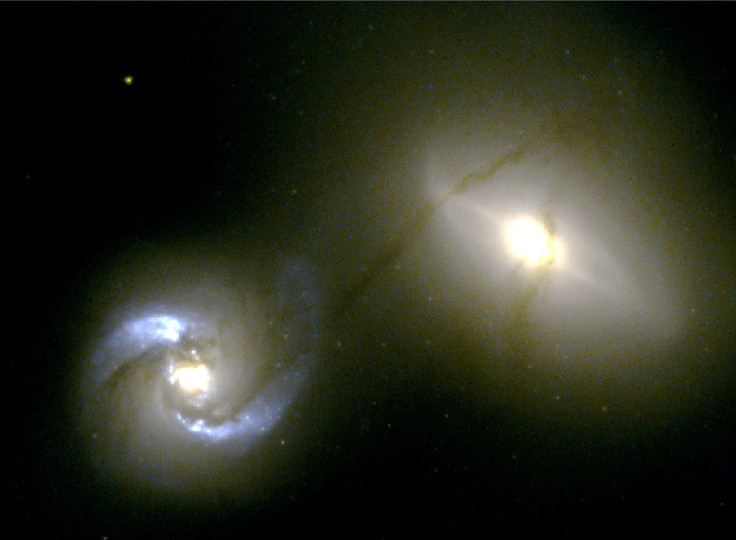Does Dark Matter Exist? Unusual X-Ray Signal Coming From Space Suggests It Does

A group of scientists has detected an unusual X-ray signal coming from space, which they say could be proof of the existence of dark matter, a phenomenon that is believed to be responsible for keeping galaxies intact.
While examining reams of X-ray data collected by the European Space Agency's XMM-Newton spacecraft, scientists at the École Polytechnique Fédérale de Lausanne (EPFL) in Switzerland identified a strange spike in X-ray emissions coming from two different regions -- the Andromeda galaxy and the Perseus galaxy cluster. Because the signals did not correspond to any known particle or atom, it led scientists to speculate that the signal may have been produced by dark matter.
“The signal's distribution within the galaxy corresponds exactly to what we were expecting with dark matter, that is, concentrated and intense in the center of objects and weaker and diffuse on the edges,” Oleg Ruchayskiy of EPFL, and a co-author of the study scheduled to be published in the journal Physical Review Letters, said in a statement.
According to scientists, visible matter is not enough to explain the rotation of objects and existing gravitational forces in the universe. Without a specific phenomenon that holds galaxies together, they should have torn themselves apart long ago.
“There is something missing,” according to the EPFL statement. “From this (the scientists) deduced that there must be an invisible kind of matter that does not interact with light, but does, as a whole, interact by means of the gravitational force.”
If the discovery of dark matter -- which is believed to make up at least 80 percent of the universe -- is confirmed, it is expected to usher in a new era for both particle physics and astronomy, according to the scientists.
“Confirmation of this discovery may lead to construction of new telescopes specially designed for studying the signals from dark matter particles," Alexey Boyarsky of EPFL and the study’s lead author, said in the statement. “We will know where to look in order to trace dark structures in space and will be able to reconstruct how the Universe has formed.”
© Copyright IBTimes 2024. All rights reserved.






















